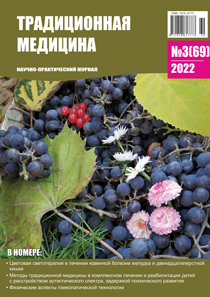Ecological-pharmacognostic assessment of quality of bitter wormwood growing in various urban- and agrobiocenosis of Voronezh region
DOI:
https://doi.org/10.54296/18186173_2022_3_37Keywords:
Voronezh region, bitter wormwood, flavonoids, essential oils, extractive substancesAbstract
An important and little-researched aspect of the effect of human economic activity on medicinal plants is that in response to an increase in anthropogenic load, the biosynthesis of secondary metabolites changes. The purpose of the study was to study the accumulation of biologically active substances in the grass of bitter wormwood, collected in agricultural and urbobiogeocenosis of the Voronezh region, different from the point of view of anthropogenic impact. As part of the study, 51 samples of bitter wormwood grass contain flavonoids in terms of rutin, extractive substances extracted by 70% alcohol and in the most contrasting samples the content of essential oil. All samples meet the requirements of the regulatory documentation for the content of essential oil and flavonoids. It was revealed that in the grass of bitter wormwood collected in agro-biogeocenosis,
the content of flavonoids is on average 2 times higher than in samples collected in natural biocenosis of protected areas, and in raw materials collected in a number of urbobiogeocenosis – 2.7–4 times higher than in samples of control protected areas, which is explained by the biochemical adaptation of the plant to significant Near some manufacturing plants and along highways with high traffic intensity, we selected samples with a flavonoid content reduced relative to other samples, which can be explained by the suppression of the antioxidant system of plants with excessive anthropogenic influence. In terms of the content of extractive substances extracted by 70 % alcohol, two samples of the studied medicinal vegetal raw materials, collected along the railway and in Kalach, do not meet the pharmacopoeic requirements.
References
Регистр лекарственных средств России: [сайт]. URL: https://www.rlsnet.ru/. (дата обращения: 18.07.2021)
Великанова, Н.А. Экооценка лекарственного растительного сырья в урбоусловиях г. Воронежа / Н.А. Великанова, С.П. Гапонов, А.И. Сливкин. – LAMBERT Academic Publishing, 2013. – 12-17 с.
Великанова, Н.А. Экологическая оценка состояния лекарственного растительного сырья (на примере Polygonum aviculare L. и Plantago major L.) в урбоусловиях города Воронежа и его окрестностей: автореф. дис. ... канд. биол. наук / Н.А. Великанова. – Воронеж: Изд-во ВГУ, 2013. – 21 с.
Куркин, В.А. Фармакогнозия / А.В. Куркин. – Самара: Офорт, 2004. – С.687–690.
Баяндина, И.И. Взаимосвязь вторичного метаболизма и химических элементов в лекарственных растениях / И.И. Баяндина, Ю.В. Загурская // Сибирский медицинский журнал. – 2014. – №8. – С.107–111.
Вторичные метаболиты растений: физиологические и биохимические аспекты (Часть 3. Фенольные соединения): Учебно-методическое пособие / Й.Р. Абдрахимова, А.И. Валиева – Казань: Казанский университет, 2012. – 40 с.
Loreto F., Schnitzler J.-P. Abiotic stresses and induced biogenic volatile organic compounds // Trends in Plant Science. – 2010. – Vol. 15. – P.154-166.
Flavonoids as Antioxidants in Plants Under Abiotic Stresses / M.D. Ferdinando, C. Brunetti, A. Fini, M. Tattini // Abiotic stress responses in plants: metabolism, productivity and sustainability / Ed. P. Ahmad, M.N.V. Prasad. – NY: Springer New York, 2012. – P.159–179.
Государственная фармакопея Российской Федерации. Издание XIV. Том 4. — М.: ФЭМБ, 2018. – 6228–6236 с.
Реброва, О.Ю. Статистический анализ медицинских данных. Применение пакета прикладных программ STATISTICA / О.Ю. Реброва. – М.: «МедиаСфера», 2000. – 312 с.
Downloads
Published
How to Cite
Issue
Section
License
Reproduction of any materials without the written permission of the publisher is prohibited.
The responsibility for the accuracy of the information contained in articles and advertisements are the authors and advertisers.






